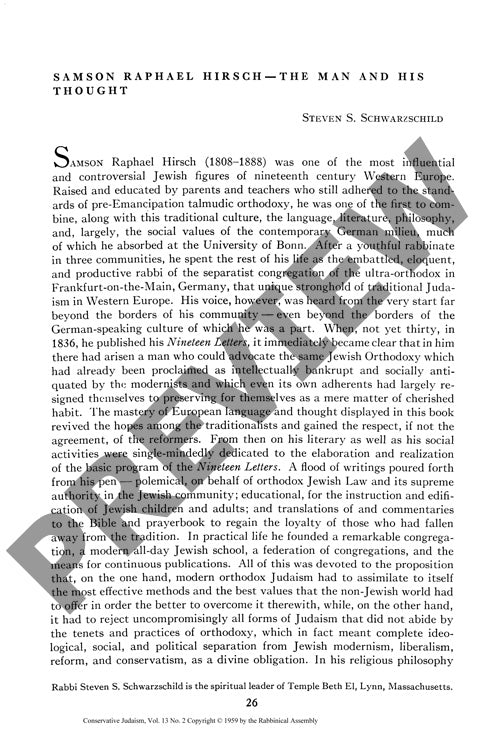Samson Raphael Hirsch the Man and His Th
Couldn't load pickup availability
In nineteenth-century Western Europe, as traditional Judaism faced unprecedented challenges from modernization, Samson Raphael Hirsch (1808-1888) emerged as a pioneering yet polarizing figure who proved Orthodox Judaism could engage with secular culture while maintaining religious authenticity. Through analysis of Hirsch's extensive writings, particularly his seminal "Nineteen Letters" (1836) and newly translated texts, this research reveals how his unique theological synthesis reflected both steadfast Orthodox commitments and liberal European values. Hirsch's education at the University of Bonn shaped his distinctive approach to interpreting Jewish commandments (טעמי המצוות), combining innovative linguistic and symbolic methods that anticipated later biblical scholarship while sometimes venturing into questionable etymological speculation. While grounding his theology firmly in divine revelation at Sinai, Hirsch paradoxically incorporated contemporary German ideals of democracy, social progress, and human perfectibility. His controversial decision to establish separate Orthodox communities, especially in Frankfurt, created lasting institutional divisions within German Jewry that continue to influence modern Orthodox movements. By examining Hirsch's biographical context alongside theological and philosophical analysis of his work, this research demonstrates how his legacy embodies both the possibilities and tensions inherent in Orthodox Judaism's encounter with modernity.

More Information
-
Physical Description
-
Publication Information
Published 1959
ISBN
-
Publication Credits
Steven Schwarzschild

